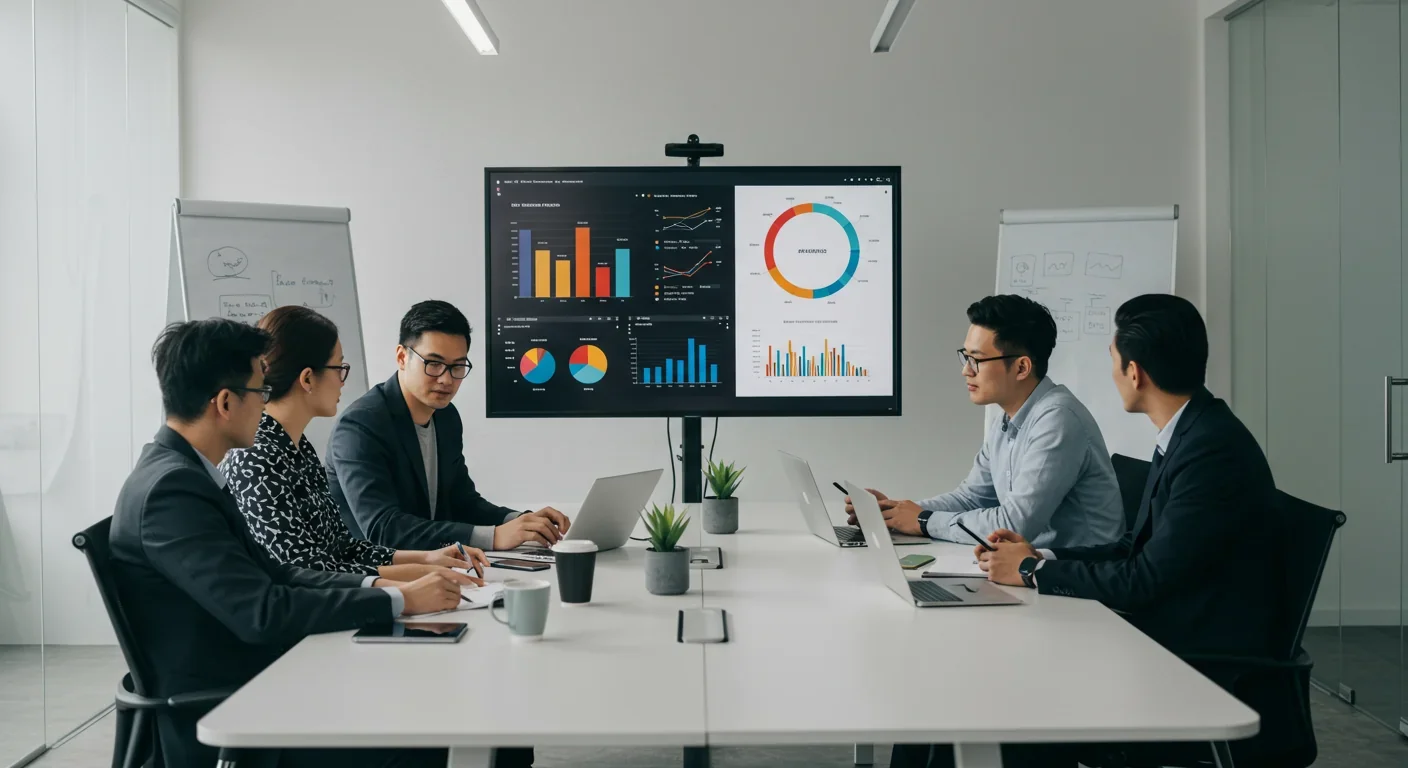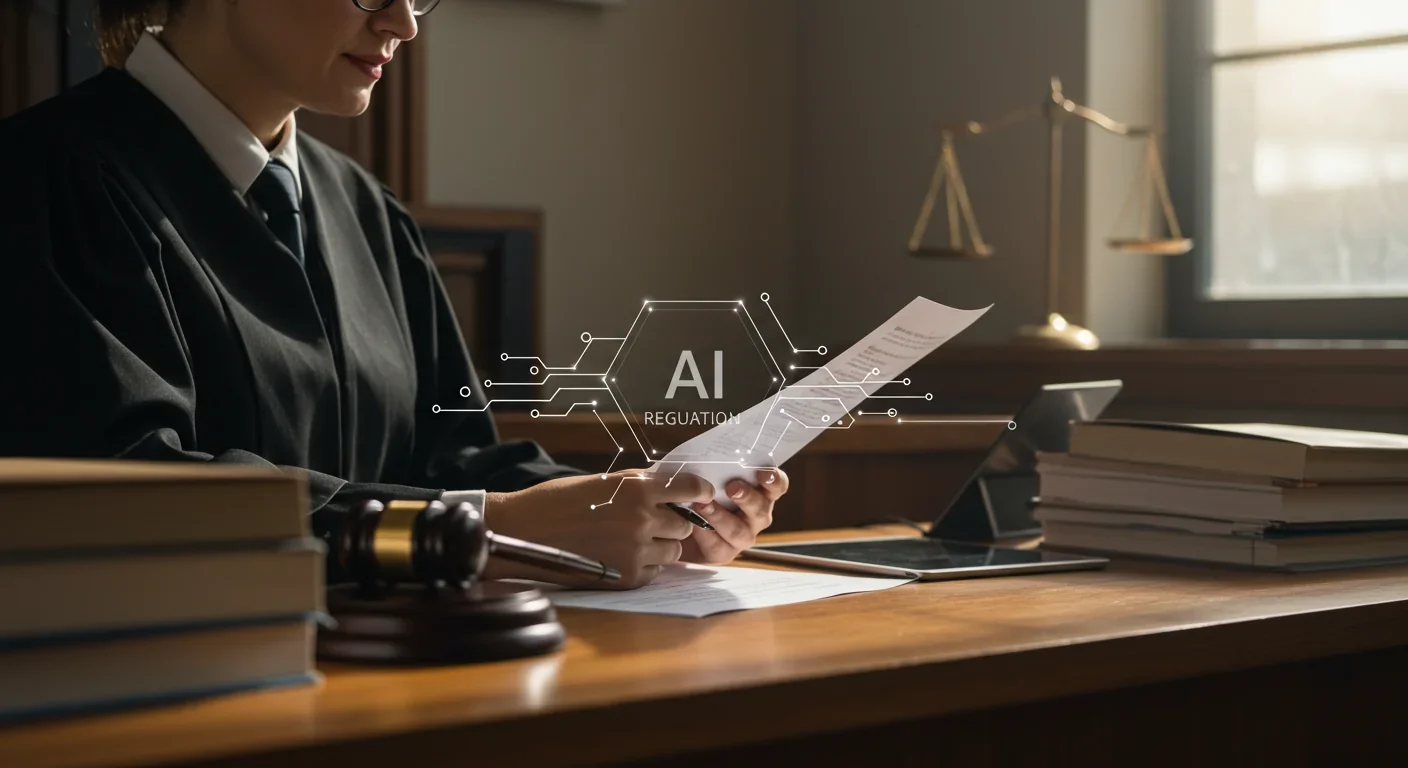AI Training Data Copyright Crisis: Lawsuits & Solutions

TL;DR: AI systems are making critical decisions about jobs, loans, and justice, but hidden biases in algorithms are producing systematically unfair outcomes. New tools and regulations now enable organizations to audit AI systems for bias before deployment, using frameworks like AI Fairness 360 and emerging legal requirements like NYC's Local Law 144. The challenge isn't just technical but philosophical: different fairness metrics often conflict, forcing difficult trade-offs that require human judgment about values and priorities.

By 2030, AI systems will make more decisions about your life than any human ever will. They'll decide if you get the job, the loan, the apartment. They'll predict your health risks, your creditworthiness, your likelihood of committing a crime. And buried deep in their algorithms, invisible to the naked eye, bias is already making those decisions unfair.
The good news? We're getting much better at catching it.
Algorithmic bias isn't some distant, theoretical concern. It's happening right now, affecting real people in devastating ways. When Amazon scrapped its AI recruiting tool because it systematically downgraded résumés from women, that wasn't a glitch. When facial recognition systems misidentify Black faces at rates five to ten times higher than white faces, that's not an accident. When predictive policing algorithms send more officers to neighborhoods based on historical arrest patterns rather than actual crime rates, creating a feedback loop of over-policing, that's algorithmic bias doing exactly what it was trained to do.
The problem is insidious because AI systems don't mean to discriminate. They learn patterns from historical data, and if that data reflects human prejudices, health disparities, or systemic inequalities, the AI simply amplifies them at scale. It's discrimination with a mathematical veneer, harder to spot and even harder to challenge.
But here's what's changed: we now have tools, frameworks, and methodologies specifically designed to audit AI systems for bias before they cause harm. The field of algorithmic fairness has evolved from academic theory to practical necessity, driven by lawsuits, regulations, and a growing recognition that biased AI poses existential risks to businesses and society.
Algorithmic bias occurs when an AI system produces systematically unfair outcomes for certain groups of people. It can creep in at multiple stages: biased training data that underrepresents certain demographics, flawed feature selection that uses proxies for protected characteristics, or evaluation metrics that optimize for the wrong outcomes.
There are several types to watch for. Historical bias reflects past discrimination baked into training data. Representation bias happens when your training set doesn't match the real-world population. Measurement bias occurs when the data you collect is less accurate for some groups than others. Aggregation bias emerges when a one-size-fits-all model performs differently across subgroups.
Understanding these distinctions matters because different types of bias require different auditing approaches. You can't fix what you can't see, and you can't see what you're not looking for.
Companies can no longer afford to ignore algorithmic bias. The legal and regulatory landscape has shifted dramatically. New York City's Local Law 144 now requires employers using AI in hiring to conduct annual bias audits and publish the results. The European Union's AI Act classifies high-risk AI systems, including those used in employment and credit decisions, requiring rigorous conformity assessments and transparency.
These aren't toothless guidelines. They come with real penalties and create legal liability for companies deploying discriminatory AI. Beyond regulation, the reputational damage from a public bias scandal can be catastrophic. When Goldman Sachs faced scrutiny over alleged gender bias in Apple Card credit limits, the backlash was swift and severe.
The message is clear: bias audits are no longer optional. They're a compliance requirement, a risk management strategy, and increasingly, a competitive advantage.
So how do you actually audit an AI system for bias? The answer depends on what you're looking for and when you're looking.
Pre-deployment audits happen during model development. You examine training data for representation issues, test the model's performance across different demographic groups, and measure fairness using established metrics. This is where tools like AI Fairness 360, an open-source toolkit from IBM, become invaluable. AIF360 provides over 70 fairness metrics and 10 mitigation algorithms, allowing developers to quantify bias and test interventions before deployment.
Post-deployment audits monitor AI systems in production, tracking how they perform in the real world. Google's What-If Tool lets you probe models with hypothetical scenarios, visualizing how changing one feature affects predictions. Microsoft's Fairlearn focuses on assessing and improving fairness through interactive dashboards that show disparate impact across groups.
The key is choosing the right fairness metric for your use case. Demographic parity asks whether outcomes are distributed equally across groups. Equalized odds requires that true positive rates and false positive rates are equal. Predictive parity focuses on whether positive predictions are equally accurate across groups. Each metric captures a different notion of fairness, and satisfying one often means sacrificing another. This is the mathematical reality of fairness: there's no single "fair" that works for every situation.

Let's look at how bias auditing works in practice. In criminal justice, the COMPAS algorithm used to predict recidivism became infamous when investigative journalists found it incorrectly labeled Black defendants as high-risk at nearly twice the rate of white defendants. The audit revealed that while the algorithm's overall accuracy was similar across races, its error patterns were systematically different, producing more false positives for Black defendants and more false negatives for white defendants.
In lending, auditors use adverse impact ratio analysis, comparing approval rates between groups. If one group's approval rate is less than 80% of another's, that triggers scrutiny under fair lending laws. Modern auditing goes further, using techniques like counterfactual fairness, asking: would this person have gotten a different outcome if they belonged to a different demographic group, all else being equal?
Healthcare AI presents unique challenges. An algorithm widely used to allocate care management resources was found to systematically underestimate the health needs of Black patients because it used healthcare spending as a proxy for health needs. Since Black patients receive less medical spending due to unequal access, the algorithm learned to assign them lower risk scores even when they were sicker. The audit that uncovered this used a simple but powerful approach: stratifying model predictions by race and comparing them to ground-truth health outcomes.
These cases share a common thread: the bias wasn't obvious until someone looked systematically, using appropriate metrics and disaggregated data.
For organizations deploying AI, building a comprehensive bias audit program requires four key components.
First, establish a governance framework. Who owns fairness? In practice, this means creating cross-functional teams that include data scientists, domain experts, ethicists, legal counsel, and representatives from affected communities. Fairness isn't just a technical problem. It requires understanding context, trade-offs, and societal impact.
Second, integrate auditing into your development lifecycle. Bias audits shouldn't be a final checkpoint before launch. They should happen continuously: when collecting training data, during model development, before deployment, and throughout production. Companies like IBM and Microsoft now provide toolkits that plug directly into ML pipelines, making fairness testing as routine as performance testing.
Third, document everything. The EU AI Act requires extensive documentation for high-risk systems: training data characteristics, model architecture, testing methodologies, fairness metrics, and mitigation strategies. Even if you're not subject to these regulations yet, creating model cards and datasheets establishes transparency and accountability. These documents force you to articulate what fairness means for your specific use case and how you're measuring it.
Fourth, plan for remediation. Finding bias is only useful if you can fix it. Mitigation strategies fall into three categories: pre-processing the training data to reduce bias, in-processing by modifying the learning algorithm itself to optimize for fairness, or post-processing by adjusting predictions to achieve fairness metrics. AI Fairness 360 provides implementations of all three approaches.
For the practitioners reading this, let's get specific about what bias auditing looks like in code.
A typical audit workflow starts with exploratory bias analysis: examining your training data for representation imbalances and label correlations with protected attributes. Then you train your model and evaluate its performance using disaggregated metrics. This means calculating accuracy, precision, recall, and false positive/negative rates separately for each demographic group.
Next, you calculate fairness metrics. The choice matters enormously. Statistical parity (also called demographic parity) requires that P(Y=1|A=0) = P(Y=1|A=1), where Y is your prediction and A is a protected attribute. It asks whether your model makes positive predictions at equal rates across groups.
Equalized odds requires both P(Y=1|Y_true=1,A=0) = P(Y=1|Y_true=1,A=1) and P(Y=1|Y_true=0,A=0) = P(Y=1|Y_true=0,A=1). It asks whether your true positive rates and false positive rates are equal across groups, which is often more appropriate for classification tasks where the base rates differ between groups.
Predictive parity focuses on precision: P(Y_true=1|Y=1,A=0) = P(Y_true=1|Y=1,A=1). It asks whether positive predictions are equally accurate across groups.
Here's the hard part: these metrics often conflict mathematically. Except in special cases, you can't satisfy all of them simultaneously. Research has proven that if groups have different base rates for the outcome you're predicting, you mathematically cannot achieve both equalized odds and predictive parity. You have to choose which notion of fairness matters most for your application.

Different regions are taking different approaches to algorithmic fairness, and these differences matter for anyone building AI systems that cross borders.
The European Union leads with comprehensive regulation. The AI Act takes a risk-based approach, imposing stricter requirements on high-risk systems like those used in law enforcement, employment, credit scoring, and education. Organizations must conduct conformity assessments, maintain technical documentation, and implement human oversight. The emphasis is on ex-ante regulation: preventing harm before it occurs.
The United States has taken a more piecemeal approach, with sector-specific laws and local regulations like NYC Local Law 144. Federal agencies like the EEOC and CFPB have issued guidance on algorithmic discrimination, but comprehensive federal legislation remains elusive. The focus is often on ex-post enforcement: addressing discrimination after it's identified.
Asia presents a mixed picture. China's algorithm regulations focus heavily on recommendation systems and their societal impact, requiring algorithmic transparency and "mainstream values." Singapore emphasizes a governance framework approach through its Model AI Governance Framework, providing practical guidance while avoiding rigid mandates.
These divergent approaches create challenges for global companies. An AI system that passes muster under US civil rights law might violate EU requirements for explainability and transparency. The solution isn't to aim for the lowest common denominator but to build systems that meet the highest standards from the start.
As bias auditing becomes mandatory, there's a growing need for professionals who can bridge technical expertise and ethical reasoning. Data scientists need to understand fairness metrics and their trade-offs. Product managers need to articulate what fairness means for their specific use case. Legal teams need to understand enough about algorithms to assess compliance risks.
This has spawned a new specialization: algorithmic auditors. These professionals combine ML expertise with domain knowledge in civil rights law, statistics, and ethics. Universities are launching fairness-focused curricula. Companies are creating dedicated responsible AI teams. The field is professionalizing rapidly.
For individuals, the path forward involves upskilling in three areas: technical fairness tools and metrics, regulatory frameworks and compliance requirements, and ethical reasoning about trade-offs in fairness definitions. Online courses from universities like MIT and companies like Google now offer comprehensive training in AI fairness.
Despite progress, serious risks remain. One is fairness washing: companies conducting perfunctory audits to check a compliance box without meaningfully addressing bias. Another is metric manipulation: choosing fairness metrics that make your system look good rather than those appropriate for your use case.
There's also the risk of fairness theater: focusing on measurable bias while ignoring harder-to-quantify harms. An AI system might satisfy statistical fairness metrics while still causing real harm through lack of transparency, inability to appeal decisions, or reinforcement of stereotypes.
Perhaps most concerning is the impossibility result at the heart of fairness research: for many real-world applications, perfect fairness is mathematically unachievable. When different groups have different base rates for the outcome you're predicting, you must choose which fairness criterion to prioritize, and that choice inevitably advantages some groups over others. This isn't a technical limitation to be solved. It's a fundamental trade-off requiring human judgment about values and priorities.
The future of AI fairness isn't about achieving perfect objectivity. It's about building systems that are transparent about their limitations, accountable for their impacts, and continuously improving based on real-world outcomes.
Emerging approaches like participatory design involve affected communities in defining what fairness means and how it should be measured. Continuous monitoring systems track AI performance in production and trigger alerts when fairness metrics degrade. Adversarial audits use red-teaming techniques to probe for hidden biases.
The technical tools are getting better. New research on causal fairness tries to identify and measure discriminatory decision-making beyond simple correlations. Techniques like fairness through awareness explicitly incorporate protected attributes into models to ensure fair treatment, while fairness through unawareness removes them entirely.
But ultimately, algorithmic fairness is a human problem requiring human solutions. The math can help us quantify bias and test interventions, but it can't tell us what fairness should mean in a specific context. That requires judgment, values, and ongoing dialogue with the people whose lives are affected by these systems.
If you're building, deploying, or using AI systems, here's what you can do now.
For developers: Integrate fairness toolkits like AI Fairness 360 or Fairlearn into your workflow. Make bias testing as routine as unit testing. Document your fairness considerations in model cards.
For organizations: Establish governance frameworks that bring diverse perspectives to fairness decisions. Create incentives for identifying and fixing bias before deployment. Build continuous monitoring systems for production AI.
For individuals: Demand transparency about AI systems that affect your life. Exercise your rights under regulations like GDPR to understand automated decisions. Support legislation requiring algorithmic accountability.
The AI systems we build today will shape society for decades. Getting fairness right isn't optional. It's the only way forward.

Recent breakthroughs in fusion technology—including 351,000-gauss magnetic fields, AI-driven plasma diagnostics, and net energy gain at the National Ignition Facility—are transforming fusion propulsion from science fiction to engineering frontier. Scientists now have a realistic pathway to accelerate spacecraft to 10% of light speed, enabling a 43-year journey to Alpha Centauri. While challenges remain in miniaturization, neutron management, and sustained operation, the physics barriers have ...

Epigenetic clocks measure DNA methylation patterns to calculate biological age, which predicts disease risk up to 30 years before symptoms appear. Landmark studies show that accelerated epigenetic aging forecasts cardiovascular disease, diabetes, and neurodegeneration with remarkable accuracy. Lifestyle interventions—Mediterranean diet, structured exercise, quality sleep, stress management—can measurably reverse biological aging, reducing epigenetic age by 1-2 years within months. Commercial ...

Data centers consumed 415 terawatt-hours of electricity in 2024 and will nearly double that by 2030, driven by AI's insatiable energy appetite. Despite tech giants' renewable pledges, actual emissions are up to 662% higher than reported due to accounting loopholes. A digital pollution tax—similar to Europe's carbon border tariff—could finally force the industry to invest in efficiency technologies like liquid cooling, waste heat recovery, and time-matched renewable power, transforming volunta...

Humans are hardwired to see invisible agents—gods, ghosts, conspiracies—thanks to the Hyperactive Agency Detection Device (HADD), an evolutionary survival mechanism that favored false alarms over fatal misses. This cognitive bias, rooted in brain regions like the temporoparietal junction and medial prefrontal cortex, generates religious beliefs, animistic worldviews, and conspiracy theories across all cultures. Understanding HADD doesn't eliminate belief, but it helps us recognize when our pa...

The bombardier beetle has perfected a chemical defense system that human engineers are still trying to replicate: a two-chamber micro-combustion engine that mixes hydroquinone and hydrogen peroxide to create explosive 100°C sprays at up to 500 pulses per second, aimed with 270-degree precision. This tiny insect's biochemical marvel is inspiring revolutionary technologies in aerospace propulsion, pharmaceutical delivery, and fire suppression. By 2030, beetle-inspired systems could position sat...

The U.S. faces a catastrophic care worker shortage driven by poverty-level wages, overwhelming burnout, and systemic undervaluation. With 99% of nursing homes hiring and 9.7 million openings projected by 2034, the crisis threatens patient safety, family stability, and economic productivity. Evidence-based solutions—wage reforms, streamlined training, technology integration, and policy enforcement—exist and work, but require sustained political will and cultural recognition that caregiving is ...

Every major AI model was trained on copyrighted text scraped without permission, triggering billion-dollar lawsuits and forcing a reckoning between innovation and creator rights. The future depends on finding balance between transformative AI development and fair compensation for the people whose work fuels it.